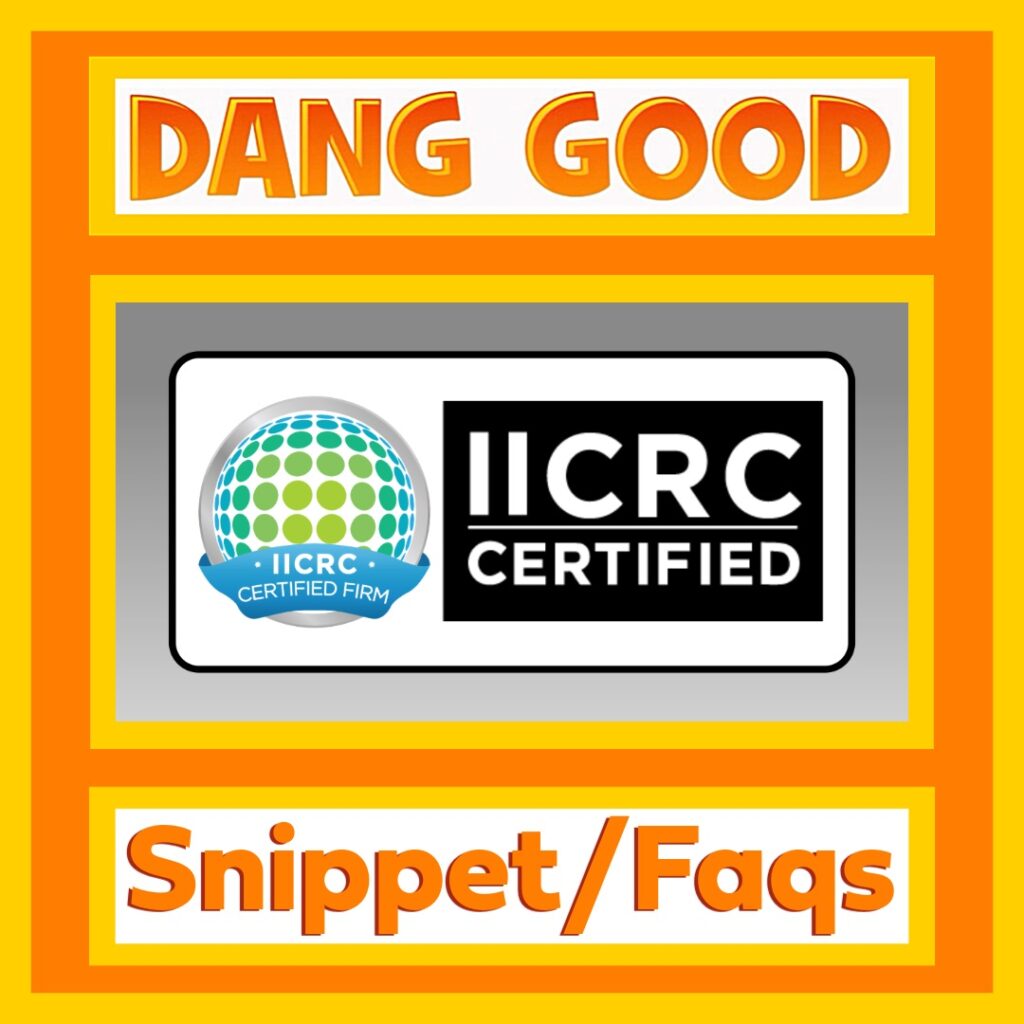IICRC Certification
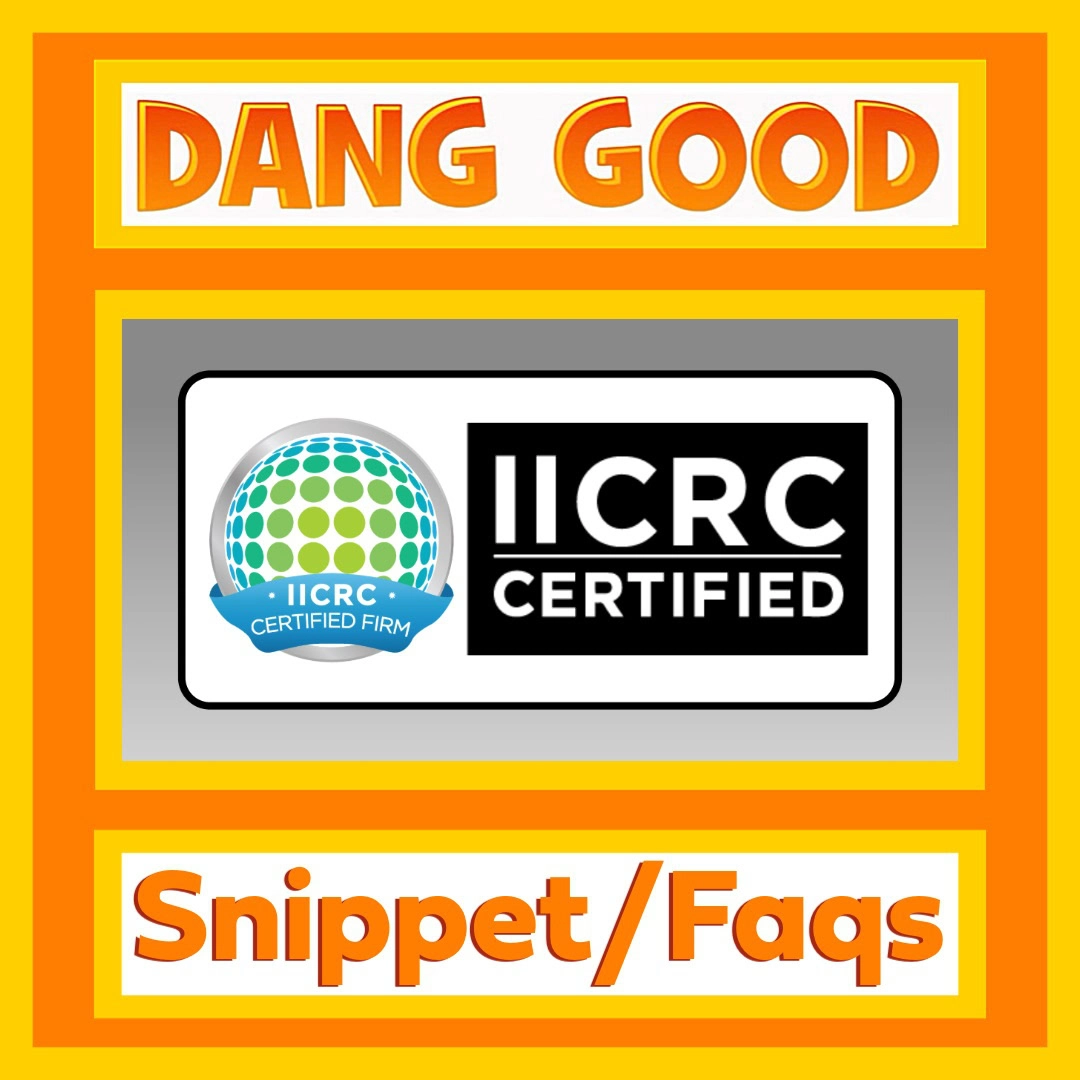
A Roadmap to IICRC Certification.
Navigating the Path to becoming an IICRC Certified Professional.
This blog post aims to help our customers, and others understand the significance of IICRC Certification within the Cleaning and Restoration Industries. Certification is pivotal to showing Quality and Trust to potential customers. It shows that cleaning companies are serious about their services. Below, we will explain what the IICRC is about, how to get certification, and why it is essential (in particular) for upkeeping standards within the carpet cleaning industry.
What is the IICRC?
The IICRC stands for the Institute of Inspection Cleaning and Restoration Certification.
It is a non-profit organization whose mission (and we quote) is “to establish and advance globally recognized standards, credentials, and certifications for the inspection, cleaning, and restoration industries."
In 2022, the institute created a brochure giving a quick snapshot of itself and a short “About the IICRC" video. The organization sets industry standards and provides education and certifications to both technicians and firms. It also provides a Code of Ethics for Certified Firms to follow.
The IICRC is recognized worldwide. In addition to North America, they have a presence in Europe and Asia, with significant growth in Australia and Japan. In its 2024 Annual Report, the institute reported over 7644 Certified Firms.
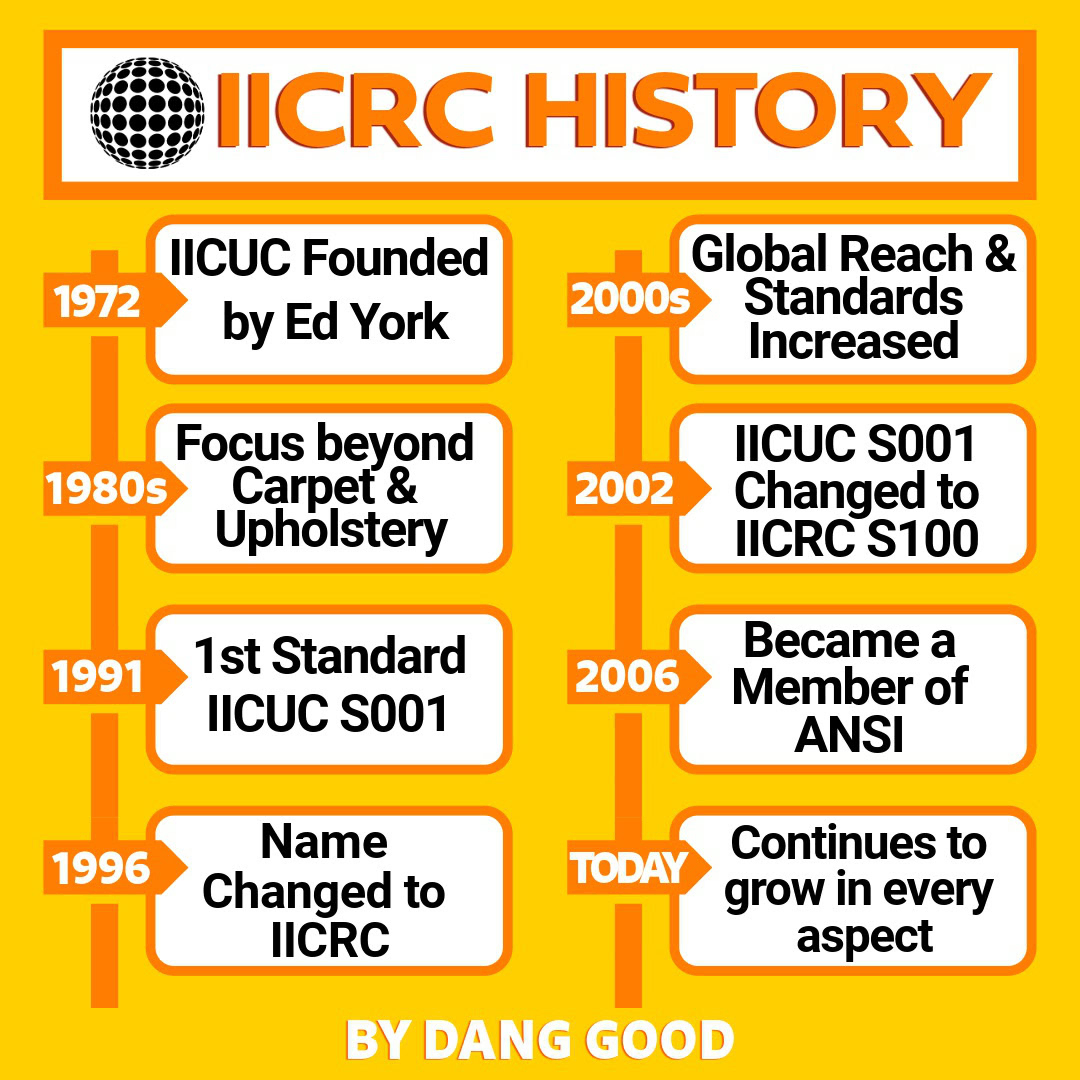
A Brief History of the IICRC.
The late Edgar “Ed” Perry York of Vancouver, WA, founded the IICRC in 1972. Initially, it was called the International Institute of Carpet and Upholstery Cleaning Inc. (IICUC), which comprised a small group of carpet and upholstery cleaners on a for-profit basis.
York pioneered Steam Cleaning (known as the Hot Water Extraction method). He didn’t invent the method but avidly promoted it, not only before it became popular but also while it was still considered controversial. Later, he also advocated for low-moisture cleaning (often called encapsulation). For a more in-depth look at Ed York, please see “In Memoriam: The Lasting Legacy of Ed York.“
- In 1972, the IICUC was established primarily to provide training and certification for the then-known Fiber Cleaning Schools of America (FCSA).
- In the 1980s, the IICUC extended its focus beyond carpet and upholstery cleaning to include other services such as water and fire damage restoration.
- The institute also set standards and reference guides, the first of which was IICUC S001 for Professional On-Location Cleaning of Textile Floor Covering Materials, published in 1991.
- By 2002, it had changed to the IICRC S100 Standard and Reference Guide for Professional Carpet Cleaning. Today, it is known as the ANSI/IICRC S100 Standard for Professional Cleaning of Textile Floor Coverings.
- In 1996, as its scope expanded, the institute’s name was changed to the IICRC (Institute of Inspection Cleaning and Restoration Certification), which more appropriately reflected the broader training and certification needs of the cleaning, inspection, and restoration industries.
- During the 2000s, the organization increased its global recognition and partnerships and added further standards and certifications, such as mould remediation.
- In 2006, the IICRC became a member of the American National Standards Institute (ANSI) and subsequently became an ANSI-accredited standards Developer.
Today, the Institute continues to grow its members, certified firms, certifications, and standards and is an internationally recognized organization.
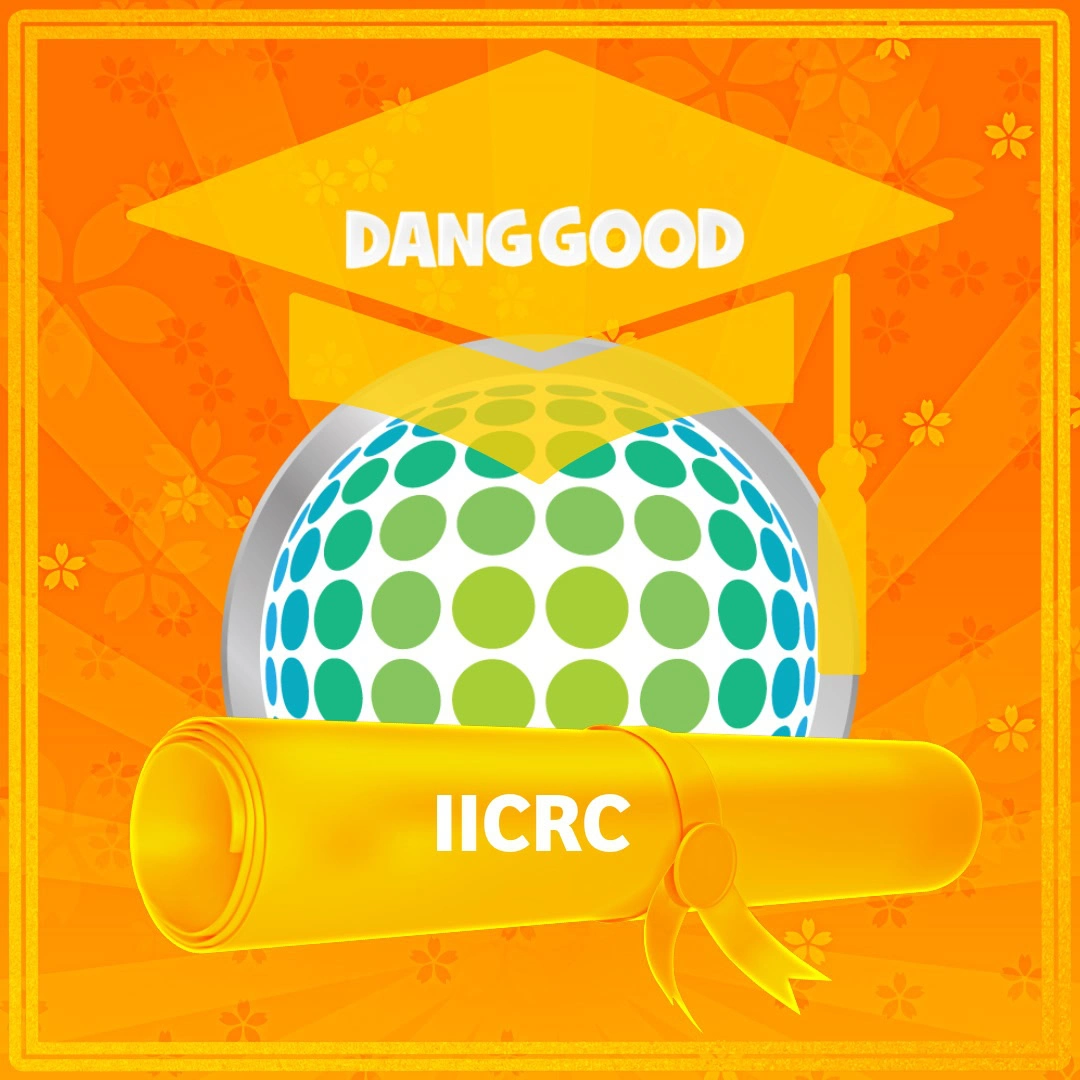
Why is IICRC Certification important?
The IICRC is a widely respected, internationally recognized, and well-established organization in the cleaning and restoration industry. Certification is essential to both professionals and customers. As a cleaning or restoration professional, you receive:
- Knowledge, training and technical skills.
- A set of standards and a code of conduct to benchmark yourself against.
- Recognition, credibility and trust signals.
- Confidence to operate with the right products and tools for each job undertaken.
Confidence is vital for customers, too.
- For example, it can be challenging to determine how to choose the best Carpet Cleaner in your area.
- By selecting an IICRC-certified firm, customers know that, at the very least, the firm they have chosen has passed the necessary core competencies and a set of standards and that the company has been vetted for licensing and insurance.
- IICRC certification is one of the best ways to distinguish between an amateur and a trained professional, offering customers added protection.
- In addition, Carpet Manufacturers and Insurance Companies often suggest that an IICRC-certified firm carry out carpet cleaning maintenance.
Certification is arguably one of the best ways to help reassure customers of a quality outcome and to give them peace of mind.
What is the IICRC’s Role?
The IICRC has a significant role in the restoration and cleaning industries and has several functions.
- Leadership – By setting standards and guidelines, training and certification, the institute sets the benchmark that reputable technicians and firms aspire to.
- Industry Protection – The institute protects the industry through advocacy and representation to policymakers and regulators. For example, in 2022, the Institute wrote to the Canadian Health Minister about indoor mould and suggested they incorporate their ANSI/IICRC standard on mould remediation as a reference in the Canadian Government’s Healthy Living Publication.
- Innovation and Research – These functions are vital to setting industry standards and certifications and ensuring they remain relevant and accurate. The organization invests in research initiatives that explore new technologies, methodologies, and materials pertinent to restoration and cleaning.
- Technical Authorship – The institute offers Publications, Standards and Guides. Most can be purchased via the IICRC Standards Webstore. In addition, it provides monthly contributions to Cleanfax and CMM (Cleaning and Maintenance Management) Magazines.
- Conference and Event Coordinator – The institute offers opportunities to network, receive awards, and learn by hosting and attending events. Each year, there is the Winter Break, the IICRC Standards Summit and the Annual Instructors Meeting.
- Collaborator – The IICRC collaborates with various organizations, including educational institutions, and other professional bodies, through Memorandums of Understanding (MoUs).
- Two notable ones are the IAQA (Indoor Air Quality Association) and the RIA (Restoration Industry Association). Dang Good is a member of both. This collaboration facilitates education, trends, perspectives and broader expertise.
- It also has several well-known shareholders, including CFCRA (Canadian Flooring, Cleaning and Restoration Association) and ISSA (International Sanitary Supply Association). Again, Dang Good is a member of both.
The IICRC is recognized by government agencies, insurance companies, manufacturers, colleges, and universities.
How to become IICRC Certified?
There are certified technicians and certified firms. One requirement for becoming a certified firm is to have at least one certified technician employed. The steps to becoming a certified technician (at the time of writing) are:
- Select a Certification Course in your chosen field. For example, carpet cleaners would likely choose CCT – Carpet Cleaning Technician.
- Locate an approved training course using the link above. Some courses are offered in person, and others are offered online.
- Enroll and attend the chosen training course. Depending on the course, this could be 2-5 days.
- Pay for and pass the certification exam. This is usually administered at the end of the course with the same approved school. Certification is typically multiple-choice.
- Submit your Application and Fees, which your instructor can help with.
- Once processed, you will receive certification.
- Certification requires renewal every 1-2 years, depending on the chosen field of study.
Types of Certifications.
Currently (as of writing), the IICRC offers the following certifications:
- AMRT – Applied Microbial Remediation Technician
- ASD – Applied Structural Drying Technician
- BMI – Building Moisture Inspection
- BCI – Building Construction Identification
- CCMT – Commercial Carpet Maintenance Technician
- CCT – Carpet Cleaning Technician
- CDS – Commercial Drying Specialist
- CPT – Contents Processing Technician
- CRT – Colour Repair Technician
- FCT – Floor Care Technician
- FSRT – Fire and Smoke Damage Restoration Technician
- HCT – House Cleaning Technician
- HST – Health and Safety Technician
- ISSI – Introduction to Substrate and Subfloor Inspection
- LCT – Leather Cleaning Technician
- MRS – Mould Remediation Specialist
- OCT – Odour Control Technician
- RCT – Rug Cleaning Technician
- RFI – Resilient Flooring Inspector
- RFMT – Resilient Flooring Maintenance Technician
- RRT – Carpet Repair and Reinstallation Technician
- SCI – Senior Carpet Inspector
- SMT – Stone, Masonry and Ceramic Tile Cleaning Technician
- TCST – Trauma and Crime Scene Technician
- UFT – Upholstery and Fabric Cleaning Technician
- WFMT – Wood Floor Maintenance Technician
- WLFI – Wood Laminate Flooring Inspector
- WRT – Water Damage Restoration Technician
Some courses require prerequisites. For example, SCI (Senior Carpet Inspector) requires CCT, CCMT and RRT certifications.
One of the most popular courses is CCT – Carpet Cleaning Technician. This course covers the various processes of carpet cleaning, fibre identification, cleaning chemistry, and standards adherence.

What Training is available?
A whole host of opportunities exist for training across the globe, both in person and online via live stream. Their certification course calendar is an excellent way to narrow down options. Live stream does appear to have become a more popular option.
Continuing Education Requirements.
Certifications expire after 1-2 years, so renewal is essential via CECs (Continuing Education Credits). A certain number of CECs must be earned within a given period to maintain certification. CECs can be earned in several different ways, such as seminars, webinars, conventions and, of course, classes. The links above can be used to search for available CEC studies. However, as an example, we at Dang Good Carpet and Furnace Cleaning have used the CleanCare Restoration Academy to attend online courses that provide the 14 Credit Hours necessary to maintain CCT Certification.
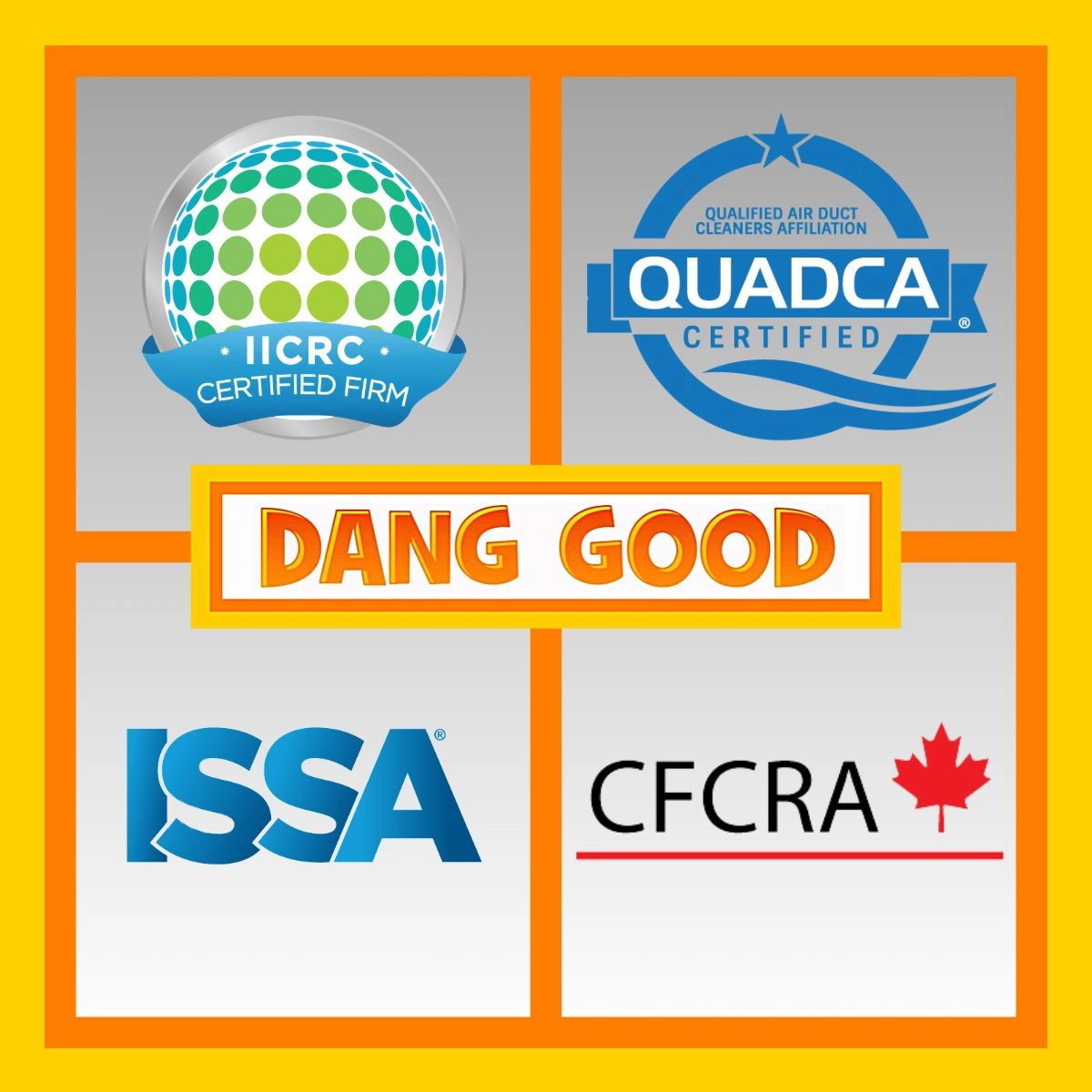
How does the IICRC stack up?
The IICRC is not the only association in the cleaning and restoration industries; however, it is one of the leading organizations. Others stand alone or provide complementary services or partnerships. Here are a few notable ones.
- NADCA and QUADCA – Both organizations focus on furnace and air duct cleaning, essential for HVAC cleaning specialists.
- RIA – offers specialized and advanced training in the restoration field and partners with the IICRC through MoUs.
- ISSA – caters to a broader range of cleaning and sanitation services, providing industry connections and knowledge. Again, it collaborates well with the IICRC.
- CFCRA – is a Canadian association and an IICRC shareholder. It offers support and training to Canadians and serves as a bridge between them and other Global professionals in the flooring, cleaning and restoration industries.
What are IICRC Standards?
These are guidelines set by the IICRC to ensure streamlined protocols, best practices, concepts, and language for cleaning, inspection, and restoration. Since the organization became a member of ANSI and an accredited standards developer, the standards are now known as ANSI/IICRC Standards.
These standards ensure that services are performed effectively and safely, following industry norms and meeting the American National Standard – a Voluntary Consensus standard (where compliance is voluntary and not mandated by law).
Some common standards are:
- ANSI/IICRC S100 – Standard for Professional Cleaning of Textile Floor Coverings focuses on cleaning carpets and rugs and specifies methods for maintaining and cleaning various textile floor coverings.
- ANSI/IICRC S220 – Standard for Professional Inspection of Hard Surface Floor Coverings describes the procedures and methods for inspecting light commercial and residential hard surface floor coverings.
- ANSI/IICRC S300 – Standard for Professional Upholstery Cleaning covers methods for cleaning upholstery materials without damaging them.
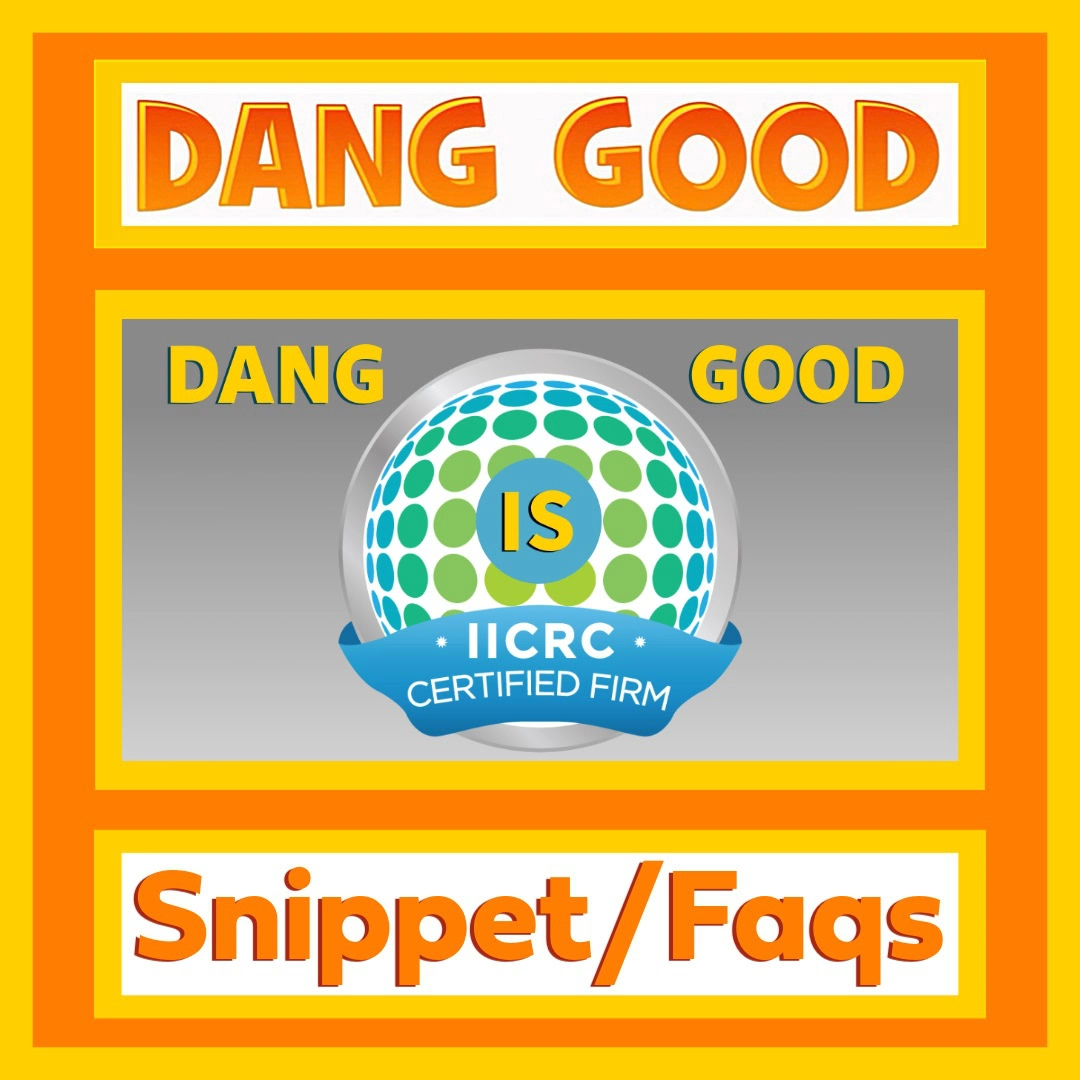
Checking for a Certified Company.
Booking a certified IICRC firm is a significant factor when, for example, you want to choose the Best Carpet Cleaner. The organization offers the option to Locate a Certified Pro to verify any firm’s certification assertions.
Why hire an IICRC Certified Firm?
Hiring a Certified firm is crucial if you want to:
- Be protected from unscrupulous businesses and untrained technicians
- Feel confident that businesses and technicians have the appropriate knowledge, skills, and commitment to high-quality services and uphold ethical practices.
- Be assured that the company has the appropriate licenses and insurance coverage.
In Conclusion.
Dang Good Carpet and Furnace Cleaning is a proud IICRC-certified firm. We wish we had more time to study for other available certifications. Indeed, they are on our agenda. Unfortunately, as we are sure any business will tell you, it is a delicate balance, with barely enough hours in the day to do everything one aspires to.
Nevertheless, the institute has been a valuable resource and guide for us. We encourage any carpet cleaner or restoration company to explore certification, and we urge those looking for cleaning or restoration services to select a company that has taken the time to undertake some training and certification.
If you are looking for Professional Carpet Cleaning or Upholstery Cleaning Services in Calgary and the surrounding areas, please don’t hesitate to Call Us!
Feel free to Share our Dang Good Blog Post using the links and hashtags below.
#IICRC #IICRCCertification #IICRCFirm #IICRCTechnician #IICRCCertifiedFirm #IICRCCertifiedTechnician

